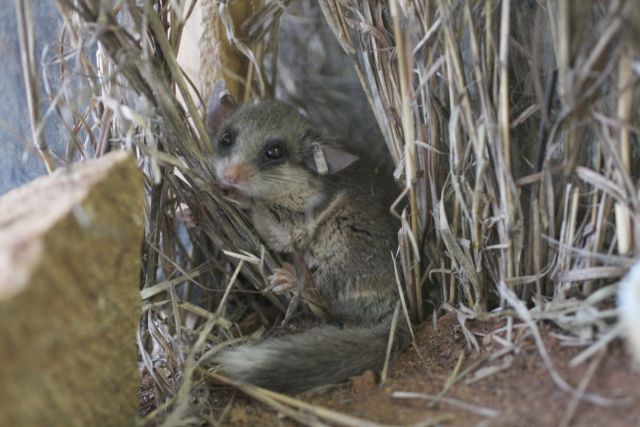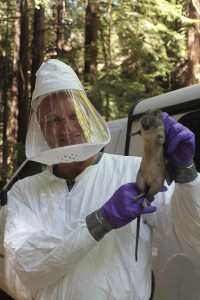
In recent decades, large swaths of East Africa’s wild, untouched lands have given way to fields of maize and other food crops in an effort to help feed the region’s growing population.
The expansion of farmland has boosted more than food production, however.
According to a new study published today in the American Journal of Tropical Medicine and Hygiene, it also has caused a spike in the number of African rats infested with plague-carrying fleas – a trend that could significantly increase the risk of humans in the region contracting the ancient, deadly disease.
Researchers found that in maize-producing areas of northe rn Tanzania, the number of rodents infested with plague-ridden fleas was double that of nearby wilderness areas. In addition, rodents captured near farm fields had more plague-infested fleas and also hosted a disease-carrying flea species that does not exist in their wildland neighbors.
rn Tanzania, the number of rodents infested with plague-ridden fleas was double that of nearby wilderness areas. In addition, rodents captured near farm fields had more plague-infested fleas and also hosted a disease-carrying flea species that does not exist in their wildland neighbors.
The team, which included researchers from Colorado State University, Stanford University, University of California-Santa Barbara, the Smithsonian and Tanzania’s Sokoine University of Agriculture, attributed the findings to the rapid expansion of agricultural lands. In some areas of Tanzania, the amount of farmland has grown by 70 percent over the past few decades.
“Farm fields are providing a ready and easily accessible source of food for these rodents,” said Dan Salkeld, a research scientist in the Department of Biology at Colorado State University and a co-author on the paper.
Researchers also found the population of Natal multimammate mice in the farming region they tested had grown 20-fold. The rodent species is known to carry the plague and other diseases such as Lassa fever.
Plagued by the plague
The team’s findings, Salkeld said, explain why parts of Tanzania are known as a “plague hotspots” and have experienced several outbreaks.
The plague is caused by a bacterium carried by fleas which also bite humans when they come into contact. Most people associate the plague outbreaks with ancient times – such as the “Black Death,” which spread through China and then Europe during the 14th century.
But plague became global around the turn of the 20th century, infesting even the western United States. Last summer, in fact, four resident of Adams County, Colorado were infected with plague.
The most severe modern-day outbreaks, however, occur in Africa. Last year, for example, outbreak in Madagascar infected 119 people and resulted in 40 deaths.
Though the team did not find evidence that the spike in plague-infested rats had caused more outbreaks in humans, Salkeld said it is a concern going forward.
“This study shows that why conditions for plague transmission to humans are occurring, and allow us to address ways to prevent disease spillover,” he said.
That could include storing maize and other crops in areas further from homes. Right now, many people store the food crops in their homes, a practice that attracts rats and thus increases the likelihood of transmission from rodents to humans.
A minute with Dan Salkeld
Dan Salkeld is a research scientist in the Department of Biology and co-author of the study. We sat down and asked him several questions about the East African research project.
How did you get involved in this project?
It was an interdisciplinary study, with expertise across the spectrum: botanists, ecologists, epidemiologists, geographers. I was the disease ecologist and plague biologist. (I had worked on plague in Colorado previously).
How did the team test the rats? Did you have to capture them and their fleas?
Yes – we put out live-traps to catch the rodents, anesthetized them and then took a small blood sample. The anesthesia also knocked out the fleas, so we collected them too, with the aid of a toothbrush. Then the animals were released. We caught around 240 rodents.
Were you surprised by the findings?
What is interesting to me is that this is a really clear example of changes to landscape having an impact upon disease risk. The numbers of mice in the corn fields is amplified, and that can affect public health. We ought to be harnessing expertise in public health, conservation, food security and ecology to examine these issues.
What do you think are the long-term implications of this study? It’s interesting. We tend to have to react to epidemics of diseases like Ebola virus or plague as an emergency. But the important question – after we have controlled an outbreak – is how to prevent new outbreaks. This study demonstrates that we can determine mechanisms for changes in disease risk, and gives us tools to prevent diseases jumping into human populations again. It also shows us the importance of understanding wildlife diseases in all manner of contexts – from Colorado prairies to East African cornfields.
Is the team planning to conduct a follow-up study?
We are certainly continuing research into disease ecology, in a variety of systems from East Africa to California and Colorado.